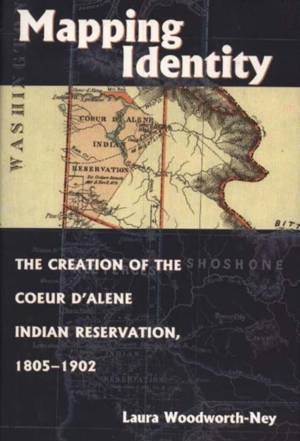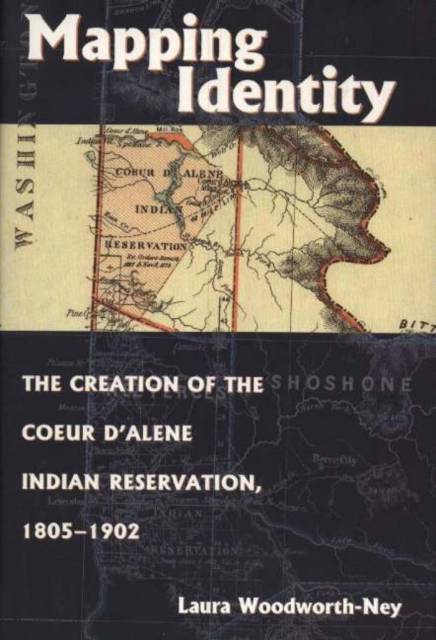
- Retrait gratuit dans votre magasin Club
- 7.000.000 titres dans notre catalogue
- Payer en toute sécurité
- Toujours un magasin près de chez vous
- Retrait gratuit dans votre magasin Club
- 7.000.000 titres dans notre catalogue
- Payer en toute sécurité
- Toujours un magasin près de chez vous
Mapping Identity

The Creation of the Coeur d'Alene Indian Reservation, 1805-1902
Laura Woodworth-Ney
Livre relié | Anglais
37,95 €
+ 75 points
Récompenses
Description
Mapping Identity traces the formation of the Coeur d'Alene Indian Reservation in northern Idaho from the introduction of the Jesuit notion of "reduction" in the 1840s to the finalization of reservation boundaries in the 1890s. Using Indian Agency records, congressional documents, Bureau of Indian Affairs (BIA) records, Jesuit missionary reports, and tribal accounts, historian Laura Woodworth-Ney argues that the reservation-making process for the Coeur d'Alenes reflected more than just BIA policy objectives. It was also the result of a complex interplay of Jesuit mission goals, the Schitsu'umsh chief Andrew Seltice's assimilationist policy, and political pressure from local non-Indians. Woodworth-Ney concludes that in creating the reservation, BIA officials and tribal leaders mapped boundaries not only of territory, but also of tribal identity.
Mapping Identity builds on the growing body of literature that presents a more complex picture of federal policy, native identity, and the creation of Indian reservations in the western United States. It will be important to readers interested in western U.S. history, legal and administrative history, Native American history, and interior Northwest history.
Spécifications
Parties prenantes
- Auteur(s) :
- Editeur:
Contenu
- Nombre de pages :
- 264
- Langue:
- Anglais
Caractéristiques
- EAN:
- 9780870817618
- Date de parution :
- 07-06-04
- Format:
- Livre relié
- Format numérique:
- Genaaid
- Dimensions :
- 153 mm x 233 mm
- Poids :
- 498 g









